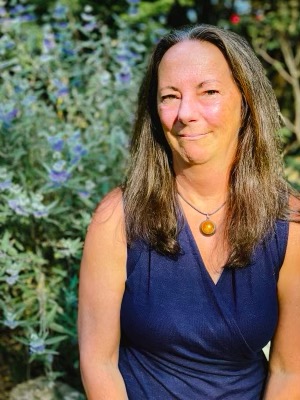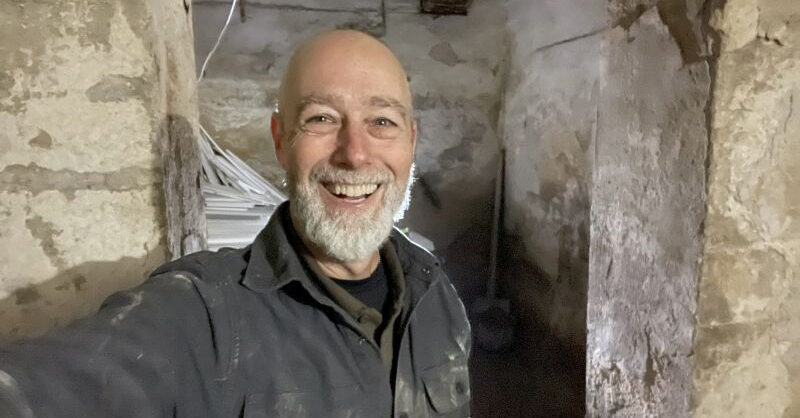This is the first in a five-part series on how alumni of Antioch’s Graduate School of Leadership and Change are advancing healthcare in service of the common good.
“For somebody with substance use disorder in the U.S., there is only one story,” says Kathy Eggert. And that story, as she puts it, is “that we believe people are not capable of self-agency and decision-making in a healthy way.” Eggert herself doesn’t believe that story, though. In fact, she’s spent her career working against this narrative by providing care to people who use opioids through methadone maintenance treatment in ways that respect their humanity. That’s meant taking a hard look at how methadone treatment is stigmatized at every level—from policy to the way treatment centers function to the internal biases of clinicians who run programs.
As the use of opioids has spread across the United States, it has become one of the defining public health crises of our time. The latest statistics from the National Institute of Health say there are three million people impacted by opioid use in the United States. Eggert says it’s an underestimate. And she’s well-positioned to draw her own conclusions about the scope of the problem. For the last 32 years she’s worked in the treatment field, most of it at methadone clinics in New Haven, Connecticut.
Methadone, which is the gold standard treatment and supported by over 50 years of research, is extremely good at helping manage withdrawal symptoms—but it is difficult to access. That’s because, when it was developed during the Nixon administration, opioid dependence was seen as an urban issue tied to Black and brown communities. Thus, rather than making it easy to access methadone, systemic racism and policy choices led to layers of regulation that still exist today. Eggert sees this history continuing to shape how people receive care, not only at a regulatory level but also with practitioners.
She has advanced her work through studying for her PhD in Leadership and Change at Antioch, where she recently defended her dissertation, “Counselors’ Lived Experience Treating Patients Utilizing Methadone: The Intersection of Culture, Policy, and Stigma.” Through interviews with 26 counselors across Connecticut who provide methadone treatment, she found this historical stigma projected onto their clients, and she furthermore found that they perceived it as supporting the use of drugs. As director of the ATP Foundation, a substance use treatment center, and through her scholarship at Antioch, she’s challenging these perceptions in the hopes of changing policy.
The reason why she’s doing this is simple—it’s because it will save lives.
Centering the People at the Heart of Her Work

When Eggert goes to the office in the morning, she can never be sure what’s going to greet her. “I walk into whatever fires are happening,” she explains. “That can be somebody overdosing in the clinic, to somebody having a psychotic break, to staff members having a hard time because of their own life circumstances.” It can be intense because of the intersection of challenges that people who use drugs often face. It can affect their ability to find work or secure housing, but this is often as much the fault of the criminalization of drugs.
Hearing this, one could wonder why she would stay in the field for as long as she has, but for Eggert, the chaos is familiar—and more importantly, she cares deeply about the people who are at the heart of it. “I welcome every minute of it. I find calmness in the storm because I see the person in front of me,” she explains. “I don’t see a person with a use disorder, I see a human being.”
It’s important to recognize that an average day for Eggert is just as likely to have uplifting stories alongside the challenging ones to challenge that stigma. Everyday occurrences that many take for granted, like speaking to a family member they’ve been out of touch with or getting hired at a new job, can be momentous for the people Eggert works with. An uplifting moment can also be something as simple as someone who was having a bad day the last time she saw them, now smiling and saying good morning to her.
Ultimately, these ups and downs reflect what are often chaotic circumstances people using drugs can face. But this is also why making treatment as easy as possible for people to access is important. An open-access model for rapid enrollment with the removal of burdensome requirements appears to improve treatment access. “There’s no other population where we have such effective treatments that they’re so underutilized. And that comes down to stigma.” Eggert is critical of how the racist origins of methadone’s regulatory structure shape access when what should be shaping access is the reality that the treatment works well and could help so many more people who want to stop using opioids. Yet many barriers continue to resist dismantling. As she explains, “Based on who you are, what color you are, what gender you are, who you identify as, all those layers have meaning as to who can access care more effectively.”
As the opioid crisis has moved into whiter and more affluent demographics of people, some treatments for managing withdrawals and pain are more readily available. In light of all this, it’s clear that there isn’t a logical reason methadone continues to be as heavily regulated as it is. “Part of what drove me to come back to Antioch was watching regulations over the years and seeing how they handle methadone,” she says. She wanted to look deeper into the systems surrounding access.
Developing Accessible Models of Care
Eggert’s story of caring for people who use drugs doesn’t start the day she entered the clinic, fresh out of grad school in 1989, but much closer to home. “I had a cousin I adored. When he came back from Vietnam, he was using heroin,” she says. “That was part of my fabric and upbringing.” It was also the reason she had some trepidation about working in methadone treatment. She worried it would be too much to handle, given her own family history. “But when I got here, I realized no, this is exactly what I need to be doing,” she says.
At the New Haven-based APT Foundation, where she has long worked, she brought her deep empathy for people and her knowledge of why these regulatory systems were created and started to rethink how to provide treatment. “We rebuilt the program understanding the barriers that were in place were there without reason,” she explains. Working with new leadership, they developed an open-access model, a hugely innovative approach for the time. It was modeled on harm reduction methods, although Eggert says they didn’t have that language for it in the 90s. At the height of the HIV epidemic, though, communities that were facing high spread of the virus and abandoned by the government began to live in a way that supported a reduction of harm over complete abstinence from drugs or sex. This was the beginning of the harm reduction movement. And it helped inspire new ways of thinking about methadone treatment, too.
Before implementing an open-access program, people would come for care and often face long waiting periods before they could start treatment. Sometimes, it would take more than a month to get an appointment. “The message that would send is that you’re not valued and not important. To somebody with substance use disorder, that’s a life or death sentence,” she says. They started building infrastructure at the clinic that allowed people to get access to methadone immediately, without jumping through hoops or mandating sobriety. This model was a change that allowed people to access care the way that fit them best and met them where they were. It centered on people’s lives and recognized that people have agency, even if they use drugs.
New Regulations, Same Stigma, Some Hope
Decades later, another change happened that opened more access to treatment, this time at the policy level. In the past, to access methadone treatment, regulations dictated daily visits to a specialized clinic, and they often included sobriety mandates or demanded concurrent mental health appointments. All of these stipulations make maintaining care extremely difficult. “You’re really tied to a clinic, and the medication itself becomes stigmatized because of the way we are asked to administer it,” Eggerts says. “It’s an archaic and punitive approach to care.”
Because of the COVID-19 pandemic, methadone programs were allowed to give out longer courses of treatment that people could administer on their own. This meant people didn’t have to deal with scheduling childcare, or time off work, or figure out how they’d get across town every day to get medicine. When one thinks about these hurdles in the context of any other treatable illness, it’s unimaginable.
One analogy Eggert uses is diabetes, where management is discussed with patients and there are many options for treatment, depending on what the person wants. “If they need to travel, we don’t say, ‘You’re not getting insulin for a month’ or ‘You have to go to another facility to pick that insulin up every day,’” Eggert says. But in methadone treatment, because of the stigmatization, she says those heart-to-heart conversations that recognize the autonomy of the person don’t happen.
Last year, more than 100,000 people died from an overdose. “Each and every one of those deaths was preventable,” Eggert says. “We’re continuing to allow people to die because we think they’re expendable. But each and every one of those deaths touches somebody somewhere, somehow.”
This is why Eggert keeps fighting against the stigma associated with methadone treatment, and how that stigma impacts the quality of care people receive. Even though she heard a lot of fear from clinicians about expanded access, studies have, in fact, shown that there was no increase in deaths associated with the increase in flexibility to take home medication since the expanded access brought on by COVID-19.
And she found hope in her research, too. As more people enter the field with their own experiences of methadone treatment, they’re thinking of ways to work within these inherited policies and still support the humanity of people being treated. As Eggert says, “They come with a different lens and can help say, ‘We still have this incredibly difficult regulatory system, but how do I work with this person under this structure and not make them feel marginalized? How do we figure this out together?’ We can and we must do better.”





